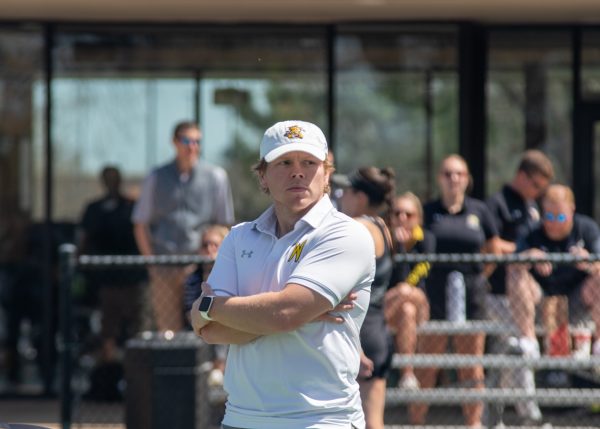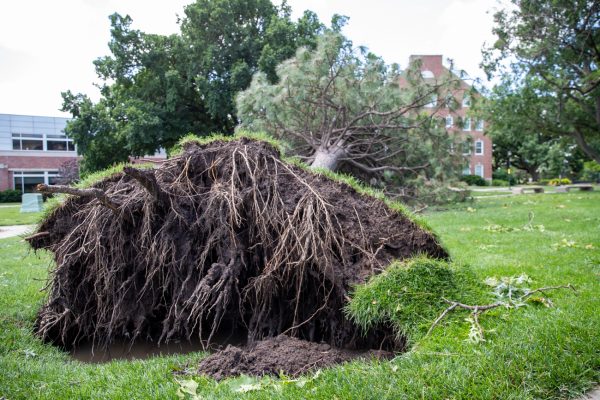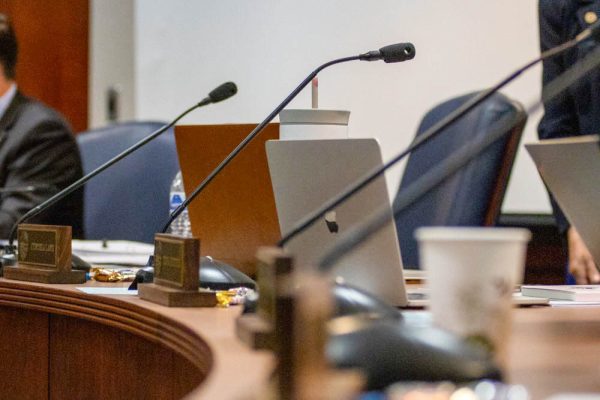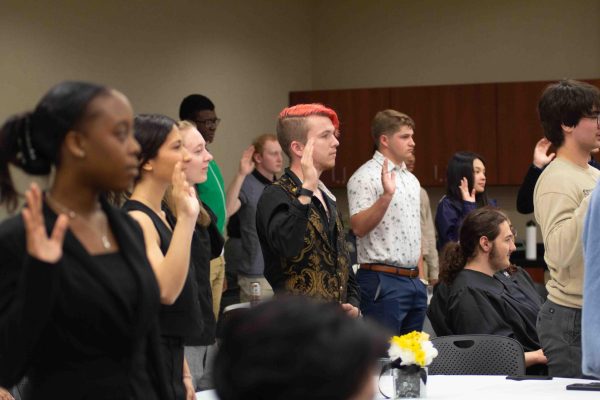Hindu celebration offers guests experience of Indian food, culture
As people line up to make the swing move by pulling it, the people ahead of them take the blessing and eat it.
These people are the members of the Association of Hindu Students in America and community members who came out to support Jamashtami, the celebration of the birth of Lord Krishna.
The celebration took place for the first time Saturday at the Donald L. Beggs Hall lobby. People driving by smelled the aroma of the food and stopped to satisfy their curiosity.
One student who made sure to eat before stepping into the building to see what the festivities were was sophomore Matthew Reed who was passing by and decided to take a look.
“Four years ago, I would have never imagined being at a Hindu event,” Reed said.
Some of the food included pav bhaji, makhan Prasad, masala tea, mango lassi, and chhole and rice.
Food was sold outside. Hindu culture was offered inside.
Kids like Dylan Shah, whose father is the off-campus officer of AHINSA, enjoyed pot painting. Another activity was Rangoli.
Rangoli is decorative designs made by the competitors to represent a sacred area for the Hindu deities, in this case the Lord Krishna.
The Lord Krishna was the 8th incarnation of the Supreme Being, Vishnu. “In the Hindu religion, there are many gods,” Associate Professor Prem Bajaj, who founded AHINSA 11 years ago, said. “The question is which one do you worship?”
Rhydhun, a dance group of various WSU students, performed a dance featuring the Lord Krishna. Pratik Gorasia played the role.
“I used to celebrate this event every year in India but here international students try to celebrate it here and it is hard to find the resources,” Bajaj said. His wife Raj Bajaj attended and said the community support is significant.
Raj Bajaj said she enjoys helping students make these events successful. Also present from the community was the president of the Cultural Association of India, Ushi Cheturvedi.
“I’m pretty sure they feel pretty connected to their culture,” Cheturvedi said when describing how students born here with Hindu heritage feel when attending events like Jamashtami, which is celebrated annually in India.
After the competitions were over and prizes had been handed out, the prayer began.
Those who took part in the prayer went to a swing in which a statue of the Lord Krishna rested and pulled a string to swing it back and forth and then took a piece of almond barfi, donated by Passage to India.
Prabhjit Singh Bagga, president of AHINSA, said the group’s intention is not to convert nor preach to others but to educate and allow those who are curious to see what being a Hindu student in America is all about.
“[AHINSA] is doing two greatly important things: they are trying to provide more awareness of the kind of festivities that have happened in the Hindu community, but more than that, they are also doing community service,” Alan D’Souza, AHINSA’s adviser, said.







